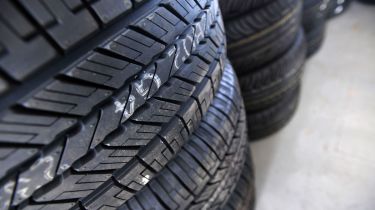Rolling Resistance
It's central to better mpg, so we look at energy required to turn a tyre

This has become a key factor in our tyre tests, as it’s essential to how efficient a car is. The higher the rolling resistance, the more energy – or in other words, the more fuel – is needed to push the car along.
This also affects motoring costs, as well as the environment. As a rough guide, a six per cent increase in rolling resistance translates into a one per cent consumption rise.
It’s no accident that special tyres are being made for the new generation of eco-cars, as they play a major role in reducing the amount of fuel used. Michelin is at the technological forefront of reducing rolling resistance, and took a clear win from Dunlop and Hankook.
Wanli at last had something to celebrate, finishing ahead of premium brands Bridgestone, Goodyear and Continental. Some of the Goodyear/Dunlop combined technology clearly rubbed off on associate brand
Fulda, which was only a fraction behind the PremiumContact 2.
Bringing up the rear were Kumho, Pirelli and Vredestein. Fit these and you could be using up to two per cent more fuel than if you had bought Michelin Primacy HPs.
| Resistance results |
|---|
| Michelin 100.0 |
| Dunlop 96.3 |
| Hankook 95.2 |
| Wanli 93.8 |
| Bridgestone 93.3 |
| Goodyear 92.6 |
| Continental 92.3 |
| Fulda 91.6 |
| Kumho 89.4 |
| Pirelli 89.1 |
| Vredestein 89.1 |
| Maxxis 90.3 |






